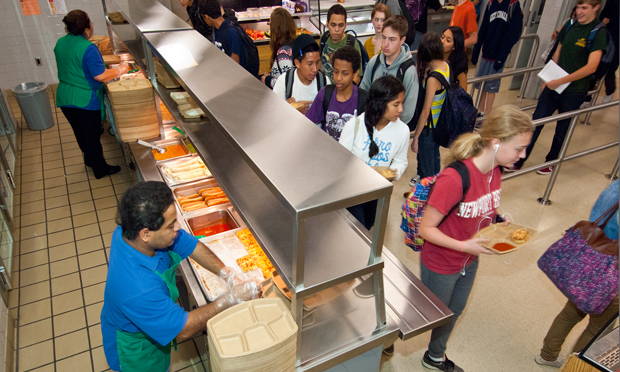When given a choice of public schools, middle-class parents choose those located in wealthier areas with fewer immigrants and fewer residents who practice minority religions such as Islam and Hinduism, a new study suggests.
The issue: Some critics of public education argue that school districts need to offer parents more options so they can select the educational programs they think are best for their children. Proponents of school choice often promote charter schools – public schools operated by private entities – and vouchers that allow low-income students to attend private schools. In some parts of the United States, school districts, as a way to provide more options, have eliminated school attendance zones. This allows families to pick their children’s schools instead of requiring them to send children to the campus closest to their homes.
An academic study worth reading: “Shopping for Schools or Shopping for Peers: Public Schools and Catchment Area Segregation,” published in the Journal of Education Policy, December 2016.
Study summary: Emma E. Rowe of Deakin University in Australia and Christopher Lubienski of Indiana University examine the choices parents make when given the option of selecting a public school for their children. The authors also look at the information parents consider.
Rowe and Lubienski focus on two areas near Melbourne, Australia, where parents can pick their children’s high school instead of sending them to one that is assigned based on a school’s “catchment” area, as is typical in much of the country. A total of 10 high schools are included in the analysis, which considers each school’s standardized test scores and the characteristics of the neighborhoods where the schools are located.
Key takeaways:
- High schools considered “popular” among parents generally are located in areas with higher income levels and a higher percentage of individuals who were born in Australia. The popular schools tend to be located in areas with a higher proportion of residents who are not affiliated with any religious group. “Overall, these data suggest a rather straightforward link between the affluence of a community and the desirability of a community’s school.”
- Schools that are considered to be “rejected” are located in lower-income neighborhoods with a greater percentage of residents who were born in Vietnam or India or whose country of birth is unknown. Rejected schools are in areas where a larger proportion of residents identify with minority religions such as Islam, Buddhism and Hinduism.
- Popular schools have the highest standardized test scores. But “the differences between the popular and the rejected schools, when examining standardized test results, is far less heightened and dramatic, in comparison to the racial, income and religious segregation that is playing out across residential and public school catchment areas.”
Other resources for journalists:
- The National Conference of State Legislators has created a guide to school choice policy.
- Among the most prominent school choice advocacy groups are EdChoice, the Center for Education Reform and the National Alliance for Public Charter Schools.
- Gary Orfield, a research professor and co-director of the Civil Rights Project at UCLA, has written extensively about school re-segregation and the consequences of school choice efforts.
- The United Nations’ database provides detailed information on a variety of education topics from an international perspective.
Related research:
- A 2016 study published in Education Finance and Policy, “What’s in Your Portfolio? How Parents Rank Traditional Public, Private, and Charter Schools in Post-Katrina New Orleans’ Citywide System of School Choice,” examines the qualities of schools in New Orleans that are most preferred by parents.
- A 2016 study in Educational Policy, “School Segregation and Resegregation in Charlotte and Raleigh, 1989-2010,” looks at school enrollment and racial segregation trends in North Carolina.
- Journalist’s Resource has summarized research on school re-segregation in the U.S. and school vouchers.
- A 2013 study in the American Journal of Education, “School Choice Policies and Racial Segregation: Where White Parents’ Good Intentions, Anxiety, and Privilege Collide,” looks at some of the unintended consequences of school choice policies.


Expert Commentary